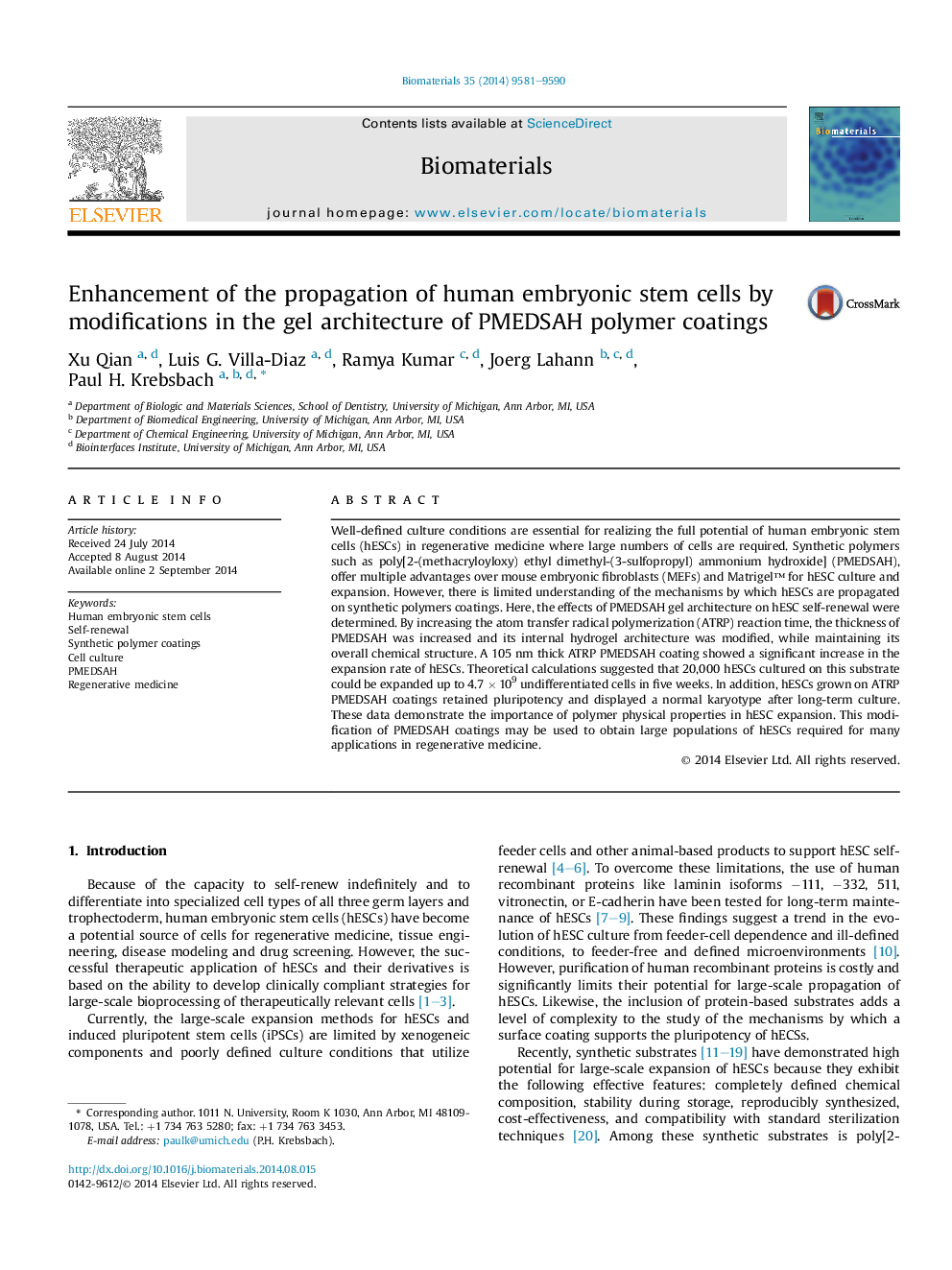| Article ID | Journal | Published Year | Pages | File Type |
|---|---|---|---|---|
| 10227164 | Biomaterials | 2014 | 10 Pages |
Abstract
Well-defined culture conditions are essential for realizing the full potential of human embryonic stem cells (hESCs) in regenerative medicine where large numbers of cells are required. Synthetic polymers such as poly[2-(methacryloyloxy) ethyl dimethyl-(3-sulfopropyl) ammonium hydroxide] (PMEDSAH), offer multiple advantages over mouse embryonic fibroblasts (MEFs) and Matrigel⢠for hESC culture and expansion. However, there is limited understanding of the mechanisms by which hESCs are propagated on synthetic polymers coatings. Here, the effects of PMEDSAH gel architecture on hESC self-renewal were determined. By increasing the atom transfer radical polymerization (ATRP) reaction time, the thickness of PMEDSAH was increased and its internal hydrogel architecture was modified, while maintaining its overall chemical structure. A 105 nm thick ATRP PMEDSAH coating showed a significant increase in the expansion rate of hESCs. Theoretical calculations suggested that 20,000 hESCs cultured on this substrate could be expanded up to 4.7 Ã 109 undifferentiated cells in five weeks. In addition, hESCs grown on ATRP PMEDSAH coatings retained pluripotency and displayed a normal karyotype after long-term culture. These data demonstrate the importance of polymer physical properties in hESC expansion. This modification of PMEDSAH coatings may be used to obtain large populations of hESCs required for many applications in regenerative medicine.
Related Topics
Physical Sciences and Engineering
Chemical Engineering
Bioengineering
Authors
Xu Qian, Luis G. Villa-Diaz, Ramya Kumar, Joerg Lahann, Paul H. Krebsbach,
